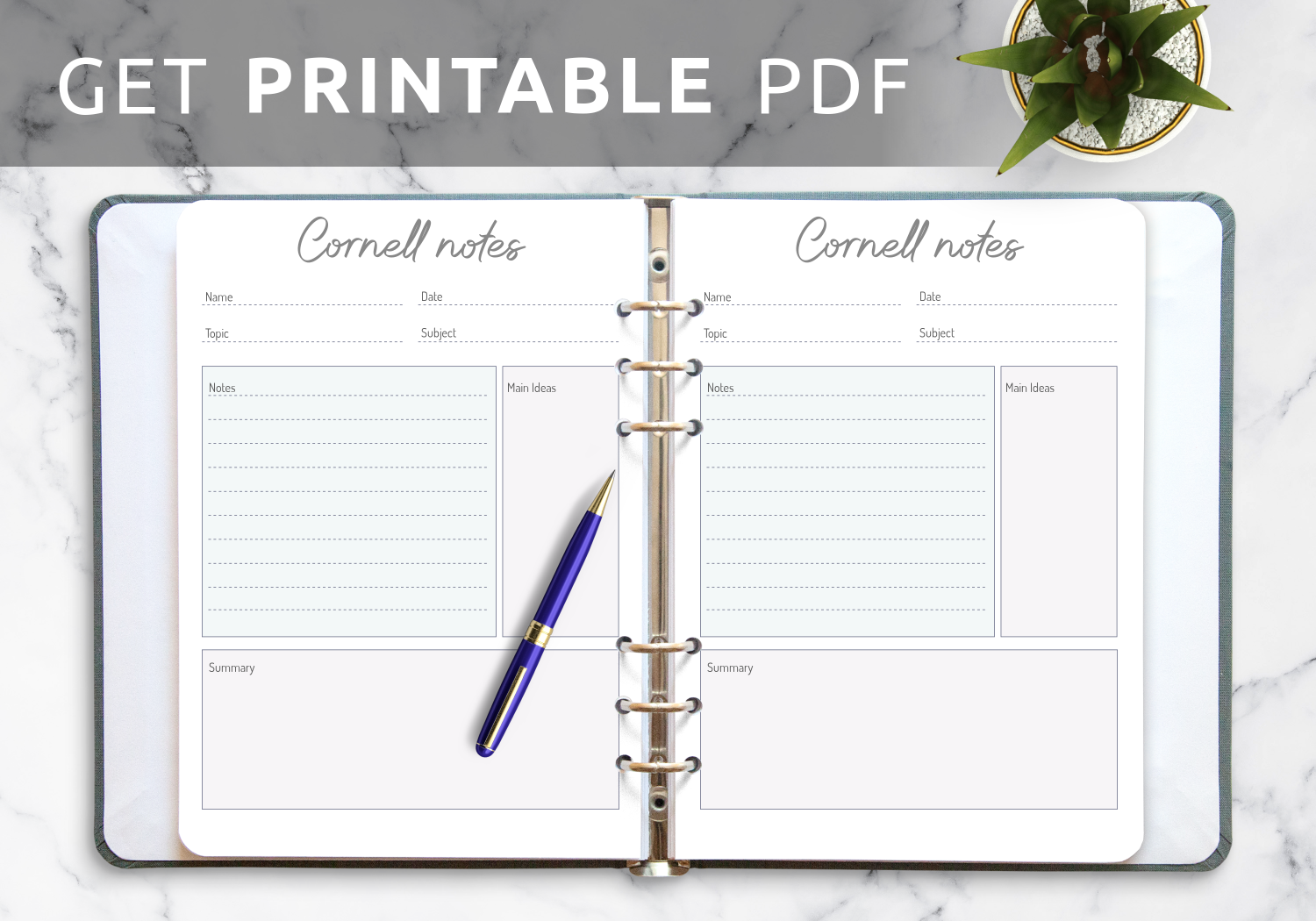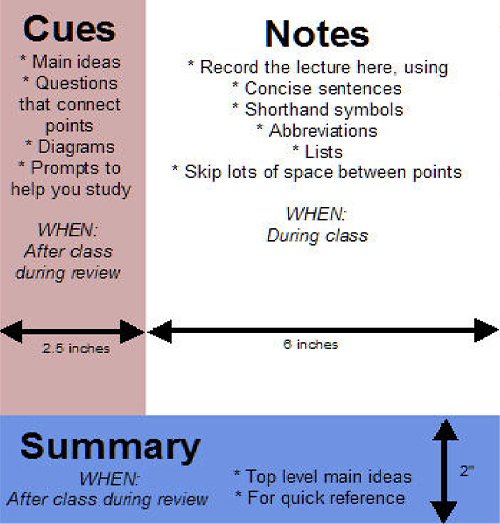

This method is also a structured way of taking notes, but focuses on three areas: the cues, the notes, and the summary. The Cornell method was pioneered by Professor Walter Pauk in the 1950s at Cornell University (hence the name).
CORNELL NOTE TAKING HOW TO
Requires more thought about how to organize contentĭoes not show relationships as well as other methods When to Use: When you want structure from the start, or when the lecture/course content is already structured and has a linear flow. I also use a different color to differentiate vocabulary and equations/formulas. highlighting important words and phrases is vital in order to pull out key information. The outline method is very customizable but always has the same underlying structure of segmenting a larger topic into smaller pieces in a linear format. You can also use roman numerals for broad topics and letters/numbers to segment that topic further, followed by the other and/or bullet points. I usually have a heading and then bullet points for the topic underneath it. Organizing lectures and course content into main points, with sub-points, and so on is the core of this method. The outline method is one of the most basic, but also popular, note-taking styles. I personally tried a few of these styles and will be sharing my experience in addition to helpful information and descriptions of all of the styles that I hope you find as useful as they were for me. This tip will explain five types of notes -outline, Cornell, mind map, course slides, and sketch notes- for you to consider (and try) in your studies.


For some, like myself, we have difficulty finding the right type of style that works best. The resource can be found in the reference section of this website under Alier & Garland.There are a variety of note-taking styles students employ in there classes. Below is a sample of key points taken from a section from the Solar system chapter called "The Inner Planets".Then students can use the method on their own to help study effectively. Check student understanding of the summarizing technique and reteach if necessary. Finally, have students complete a third section independently.After students finish, go over the notes together and decide on the main points for each section and determine the best summary that focuses on the objectives. The teacher will monitor progress by walking around the room guiding and answering questions.

For the next section have students work with partners to fill in the Cornell notes sheet (or have them make their own in their notes) together.This will serve as a good review and help students learn the new skill. For the model start with a recently learned text and go over the details of how to take notes on something they are already familiar with.As always, it is important to model and guide students through examples before they do this activity on their own.This lesson is more structured in terms of following the text subheading and then summarizing key ideas and objectives.Use the Cornell note-taking method to summarize and identify key points from sections of text.


 0 kommentar(er)
0 kommentar(er)
